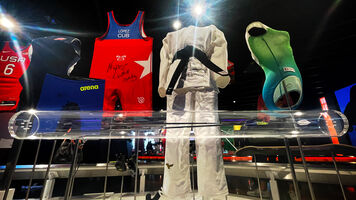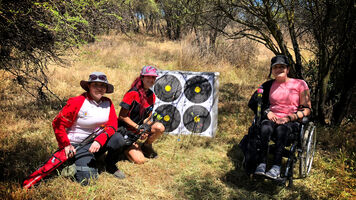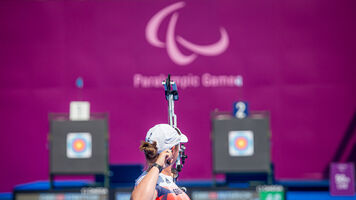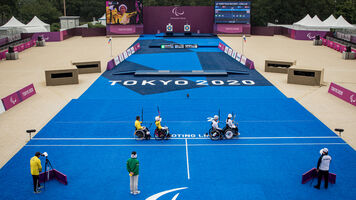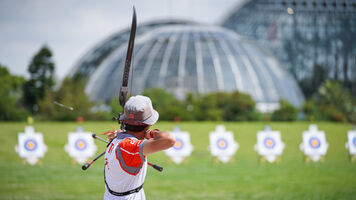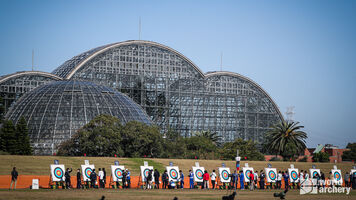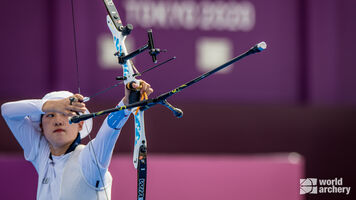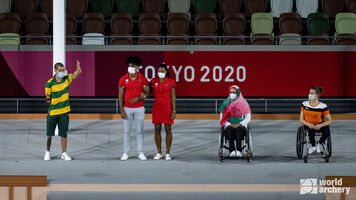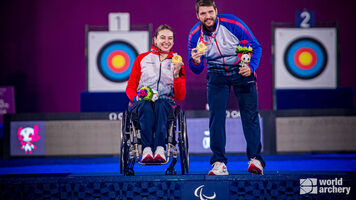Compound archery continues push for place at the Olympics
The way it starts, Sara Lopez will notice a look, a sliver of interest, a glimmer of excitement from a stranger when they learn of her status as one of the best compound archers in the world.
This happens with friends, classmates, family members – maybe even a reporter or two. Lopez will continue chatting, politely fielding questions, waiting for the inquiry that will make their curiosity disappear.
The 26-year-old from Colombia knows it’s coming. Minutes will pass, and the interaction will slowly drift toward its logical endpoint, stopping the conversation cold. “Have you been to the Olympics?” they will ask, and once they do, Lopez will gently explain that she has not – that the pinnacle of the sport remains a recurve-only affair.
“As soon as you tell them, ‘yeah, I can’t go’, they just lose complete interest,” the reigning Hyundai Archery World Champion said. “Nobody cares anymore.”
Mike Schloesser knows the experience well. His accomplishments only register so much to a casual fan. The world’s top-ranked compound man is a constant presence on the podium at the biggest archery tournaments in the sport.
But the Olympics are a notable exception.
“Everybody assumes when you say you’re an archer that you go to the Olympics,” Schloesser shrugged. “Then I have to let them know that my discipline doesn’t go, maybe in the future, you never know. Blah, blah, blah.”
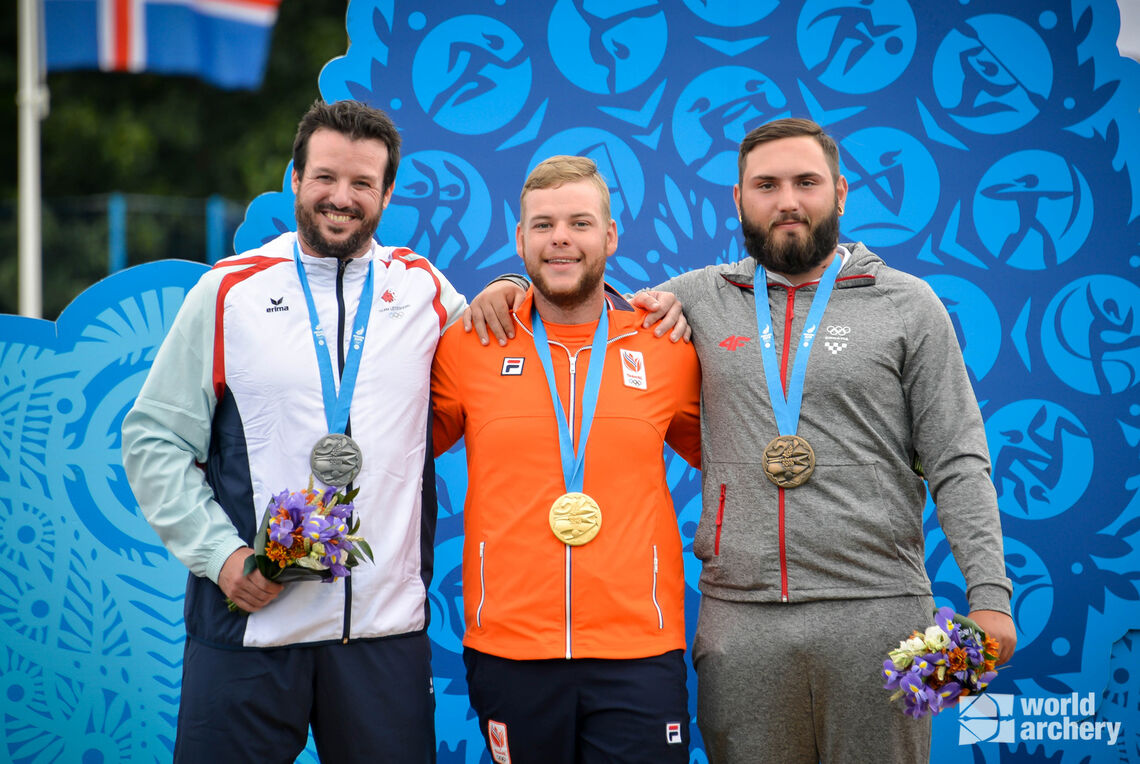
Compound bows were still in their infancy when archery returned to the Games in 1972, and they weren’t popular internationally until years later. Decades passed before it reached something resembling legitimacy; compound emerged as a competitive discipline in the 1990s and finally competed alongside recurves at the World Archery Championship in 1995.
Since then, the compound has gradually incorporated itself into the elite world of competitive archery.
Only 11 years after being added to the worlds, the discipline was included with recurve on the Hyundai Archery World Cup circuit, launched back in 2006, with equal prize money, equal events and equal exposure. In recent years, even non-endemic events have followed.
Lopez won individual gold at the inaugural compound women’s event at the Pan American Games when the style made its debut in 2019. Schloesser won the first compound men’s gold at the European Games, also in 2019. The inclusion on the programmes of these major regional multisport tournaments is widely perceived as critical steps toward eventually reaching the Olympics.
If compound was included at the Tokyo 2020 Olympic Games, both archers would be favourites to medal.
One argument against the addition is that, to a wider audience, there’s simply not that much different to what’s already on offer a the Games.
“We’re completely different,” counters Lopez. “We shoot at different distances, we have different bows and the competition format is completely different.”
“You see ties all of the time,” she continued. “You see people losing by one millimetre, and that’s really exciting. As soon as we put compound in the Olympics, I’m sure we will see a higher number of kids trying archery.”
Advocates for compound’s inclusion point to other multidisciplinary sports like fencing, gymnastics and wrestling at the Games.
Several changes, meanwhile, have been made to enhance the compound’s Olympic viability: recurve bows are shot 70 metres from the target, while compound bows are shot from 50 metres. The compound bow is also more technologically advanced than recurve, employing pulleys and levers to reduce the tension felt as archers go to shoot.
“You have beach volleyball, and you also have normal volleyball,” Schloesser said. “Three-on-three basketball looks a lot like five-on-five basketball to me. There are so many sports that are like that. Swimming, how many categories are there? It’s all in the water and you’re trying not to drown.”
Schloesser, Lopez and the rest of their compound colleagues have watched their recurve contemporaries scramble for the last remaining quota places over the past few months, usually at the same events in which they’re competing. The final qualifying event in Paris injected a level of drama into the sport that can only occur when associated with the largest sporting event in the world.
Momentum, however, appears to be on the compound’s side.
Things often move at a glacial pace in the world of sport and, if compared with archery’s return to the Games with the recurve bow, compound is still on schedule. World Archery (then FITA) began campaigning for an Olympic return when it was founded in 1931, only achieving its goal 41 years later in 1972.
Compound was recognised at the world championships in 1995 – or only 26 years ago.
“The rumours are getting stronger,” Schloesser said. “People are talking more about it. You see federations like Korea putting more effort into the compounds than they used to.”
“I think our best chance is LA, in 2028,” he added. “If it doesn’t happen there, it’s going to be really tough to get in after that.”
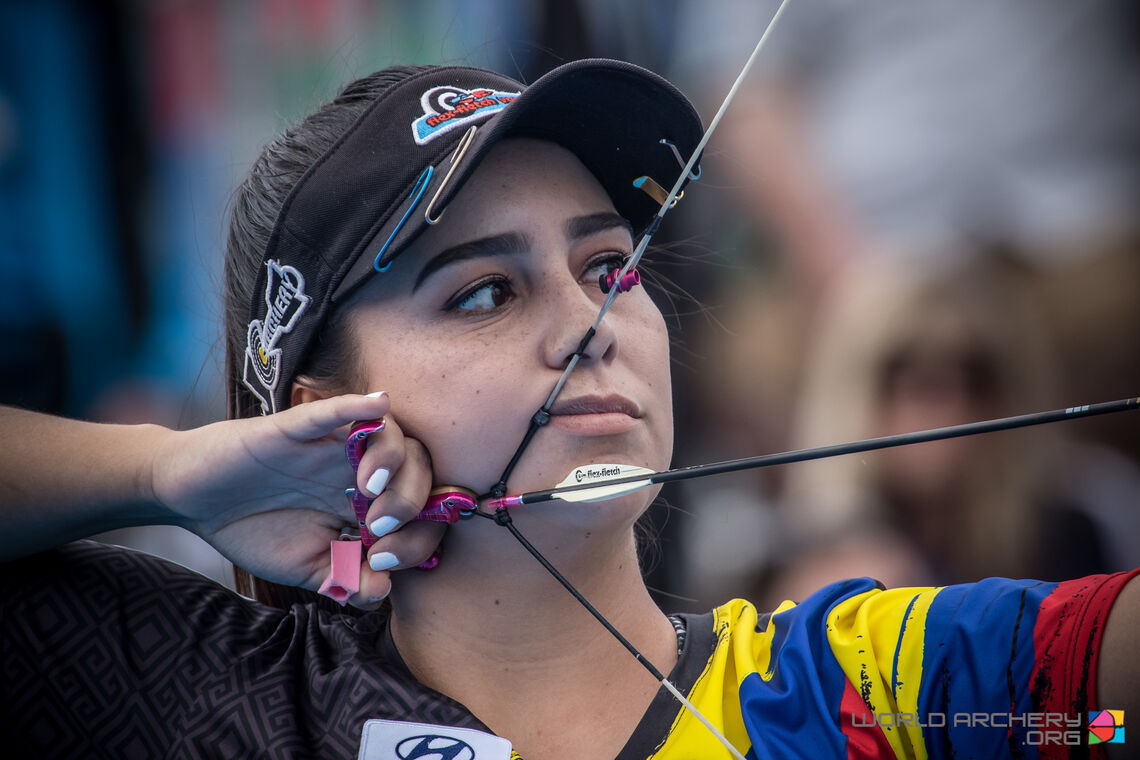
Schloesser got a taste of what Tokyo might feel like when he attended the European Games in 2019. The Dutchman travelled to Minsk, Belarus for the multisport event held in the Olympic tradition, complete with an opening ceremony, athletes’ village and a dining experience helmed by the same chefs who will be in Japan.
“The tournament wasn’t the most important thing to me, but just to have the experience of being in an Olympic village, kind of, was awesome,” Schloesser said. “I’ve heard people say that competing in the Olympics is more important than winning it, and I can understand why.”
“The experience is so huge, so good, so nice, that sometimes simply being there is enough.”
Lopez, meanwhile, expressed little interest in entertaining such fantasies. The Colombian archer purposefully chose compound when she entered the sport, threatening to quit when her coaches urged her to switch to recurve with the Olympics as an incentive.
“I think it’s because it fits more with my personality,” she said. “Compound, I see a stronger bow, faster, more aggressive. Recurve is more elegant and more technique and very passive. As soon as I shot my first arrow with compound, I knew the difference.”
Lopez said she will gladly attend the Olympics if it’s ever decided to include compound archery in future Games but finds speculation about the subject unnecessary.
She rejects the notion that compound, as a sport, is lessened at all by its absence on the world’s biggest stage.
“I compare it to dreaming about having a cool car,” Lopez said. “A Ferrari, for example. I would love to have a Ferrari, but I don’t have the money for it, so I can’t dream about it because it’s not a possibility.”
“I just try to enjoy my time with my little small car that I can have.”




